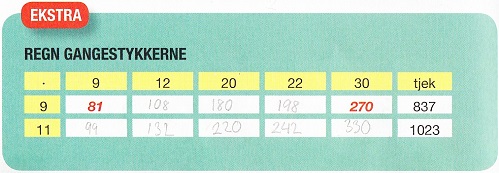Checking math homework with F# by Mark Seemann
Teaching my daughter F# while checking her math homework.
My daughter Linea is 10 years old, and I've been looking for ways to make programming relevant to her. Last year, I discovered that her math homework was beginning to include simple functions, although they weren't called that. Instead, they were verbal assignments like: "for each of the following numbers, multiply the number by 3, and subtract 2." Still, it got me thinking whether Functional Programming would be a relevant introduction to programming.
In vacations, we've been doing a bit of F# programming, and I actually got so far as to help her implement FizzBuzz in F#. Still, I was struggling with coming up with a continuing set of small problems that would enable us to progress.
Until yesterday, that is. Linea actually likes doing her math homework, but she always wants me to check it for her. This is something I'm already using some time at, but suddenly I realized that we could do it together - in F#! She would have to check her results by typing in each question, and learn F# as we go along.
This makes F# relevant to her, and being the lazy programmer that I am, I'm at the same time trying to teach her a few shortcuts we can take here and there. Here's a scan of a small part of her homework:

The Danish text basically says: multiply the numbers. As you can tell, Linea first did her homework the old-fashioned way, filling the numbers into the table. Then we sat down to check her work with F#. Here's a copy of the part of tonight's F# Interactive (FSI, a REPL for F#) session related to that table:
> let m9 x = 9 * x;; val m9 : x:int -> int > m9 12;; val it : int = 108 > m9 20;; val it : int = 180 > m9 22;; val it : int = 198 > let m11 x = 11 * x;; val m11 : x:int -> int > let input = [9;12;20;22;30];; val input : int list = [9; 12; 20; 22; 30] > Seq.map m11 input;; val it : seq<int> = seq [99; 132; 220; 242; ...] > List.map m11 input;; val it : int list = [99; 132; 220; 242; 330] > input |> List.map m11;; val it : int list = [99; 132; 220; 242; 330] > input |> List.map m11 |> List.sum;; val it : int = 1023 > List.map m9 input;; val it : int list = [81; 108; 180; 198; 270] > input |> List.map m9;; val it : int list = [81; 108; 180; 198; 270] > input |> List.map m9 |> List.sum;; val it : int = 837 >
As you can tell, Linea first created a function (m9) in order to multiply a number with 9. This is the function form I've taught her back when we were doing FizzBuzz. You could write it more succinctly as let m9 = (*) 9, but I didn't want to confuse her :)
She evaluated the first row in the table using the m9 function one cell at a time, but when it came to the next row, I decided to teach her about List.map. First, I had her create a list (input) of all the column head numbers from the table. Then I taught her to invoke the map function with the input and her m11 function. As you can see, first I had her use the imperative function call style she already knew, and then I had her use the pipe operator. That gave us a list with all the results for the last row of the table, and we could now compare the list with her homework to confirm that her results were correct.
If you look at the table, you'll see that the last column is called tjek (check), and contains a pre-populated sum the pupil can use to check whether her homework is correct. I wanted Linea to use F# to calculate the sum to confirm that everything indeed adds up correctly, so I introduced her to List.sum, and how she could further pipe her result list into the sum function, to get the sum. As you can see from the FSI session, she did that for both rows.
Obviously, I helped her here and there, but she picked up some of the concepts quite easily, and was altogether happy about our session. She felt that she learned a bit of F#, and she could relate to the work we did because she likes math already.
My purpose of posting this was to share the idea of using F# (or another programming language) to teach kids programming. While you could use other languages, I find F# a good fit because its syntax is close to the math syntax Linea learns in school, and she doesn't have to relate to a lot of curly brackets and parentheses. Additionally, the FSI makes this kind of ad hoc work easily approachable.
